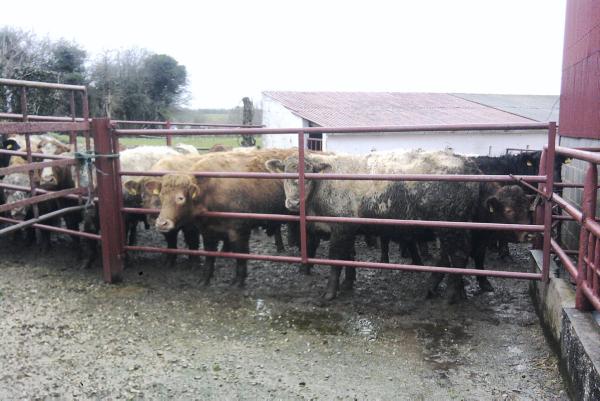If any animals fails it leaves all plans on hold and leaves a whole dark cloud over the farm. Thankfully we passed and it does give a sense of relief. We are positioned on the edge of a hotspot at present which adds to the anxiety.
A quick bit of research soon revealed that TB testing of cattle was first introduced on a pilot basis in 1950 some 64 years ago and became compulsory in 1957. This really is a sensational statistic; after all these years and we are still testing. TB has more or less been eradicated apart from one or two hotspots.
So why are we still testing animals? No one really has the answer: the farmer is certainly not benefiting. So it is certainly something I would like to see addressed in the near future. A system like the UK's might be more beneficial where areas of low TB reactors test every two or three years.
With our TB test clear, our thoughts are turning to getting some animals out to grass. We adopt a strategic approach taking note of the results of when we weighed our cattle back in December and the age profile of our animals. We operate a system where all steers are killed under 30 months, so at present some animals will have just turned 24 months and some are only 20 months.
The lightest animals will go to grass first. We have found in the past there is only one answer to light animals and that is out early and on quality spring grass. These will be joined by the oldest cattle that are currently turning 24 months. These will have 6 months to gain sufficient weight and condition.
For the first week cattle will be allowed to graze the full size of the paddock (four acres) before the strip wire goes up. The last thing we want is cattle coming out of the shed and stretching their legs whilst running through every electric fence.
Weather conditions allowing, and sticking to the spring rotation planner, a small number of cattle will be released every weekend from now on.
If any animals fails it leaves all plans on hold and leaves a whole dark cloud over the farm. Thankfully we passed and it does give a sense of relief. We are positioned on the edge of a hotspot at present which adds to the anxiety.
A quick bit of research soon revealed that TB testing of cattle was first introduced on a pilot basis in 1950 some 64 years ago and became compulsory in 1957. This really is a sensational statistic; after all these years and we are still testing. TB has more or less been eradicated apart from one or two hotspots.
So why are we still testing animals? No one really has the answer: the farmer is certainly not benefiting. So it is certainly something I would like to see addressed in the near future. A system like the UK's might be more beneficial where areas of low TB reactors test every two or three years.
With our TB test clear, our thoughts are turning to getting some animals out to grass. We adopt a strategic approach taking note of the results of when we weighed our cattle back in December and the age profile of our animals. We operate a system where all steers are killed under 30 months, so at present some animals will have just turned 24 months and some are only 20 months.
The lightest animals will go to grass first. We have found in the past there is only one answer to light animals and that is out early and on quality spring grass. These will be joined by the oldest cattle that are currently turning 24 months. These will have 6 months to gain sufficient weight and condition.
For the first week cattle will be allowed to graze the full size of the paddock (four acres) before the strip wire goes up. The last thing we want is cattle coming out of the shed and stretching their legs whilst running through every electric fence.
Weather conditions allowing, and sticking to the spring rotation planner, a small number of cattle will be released every weekend from now on.






SHARING OPTIONS